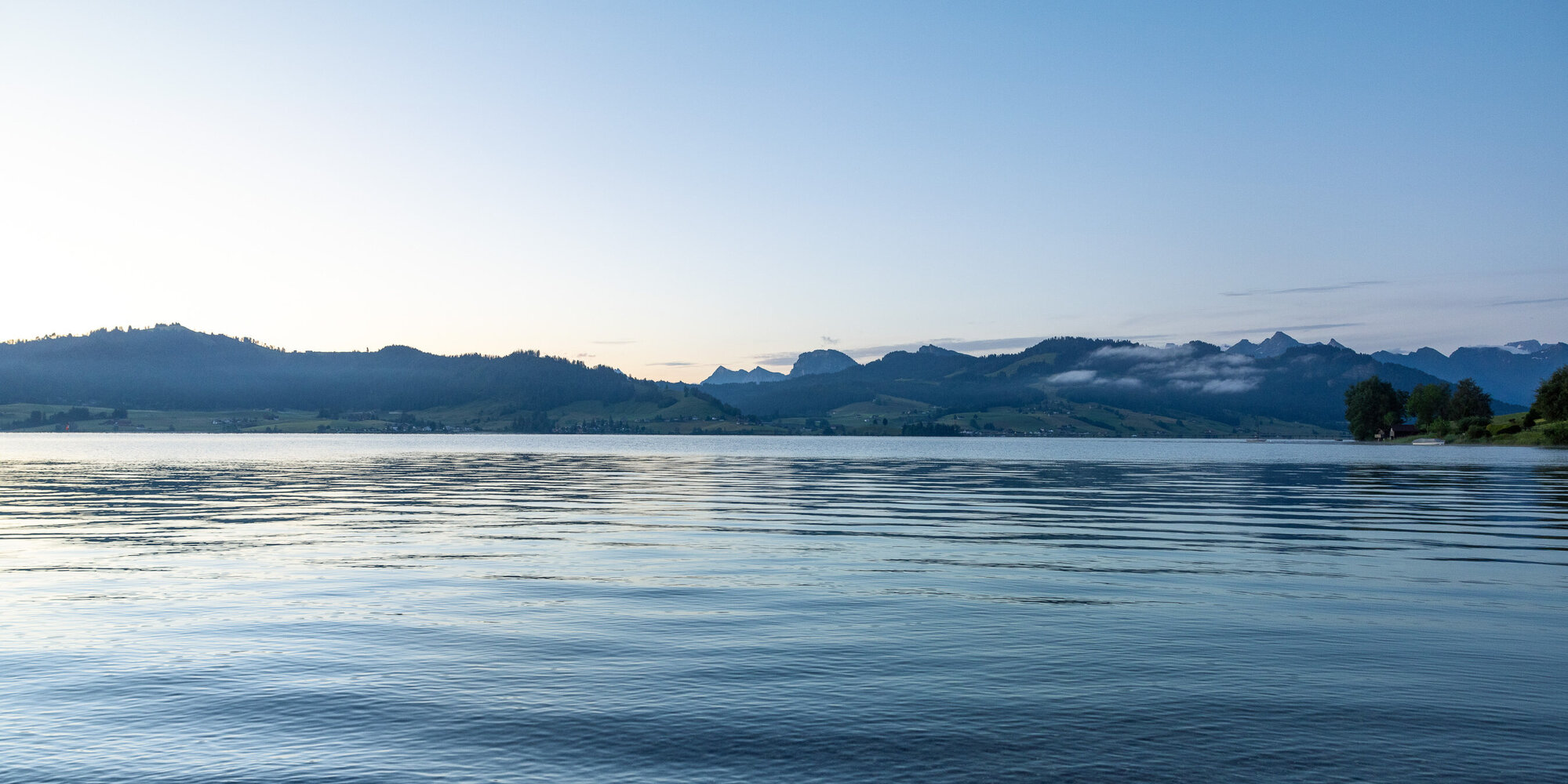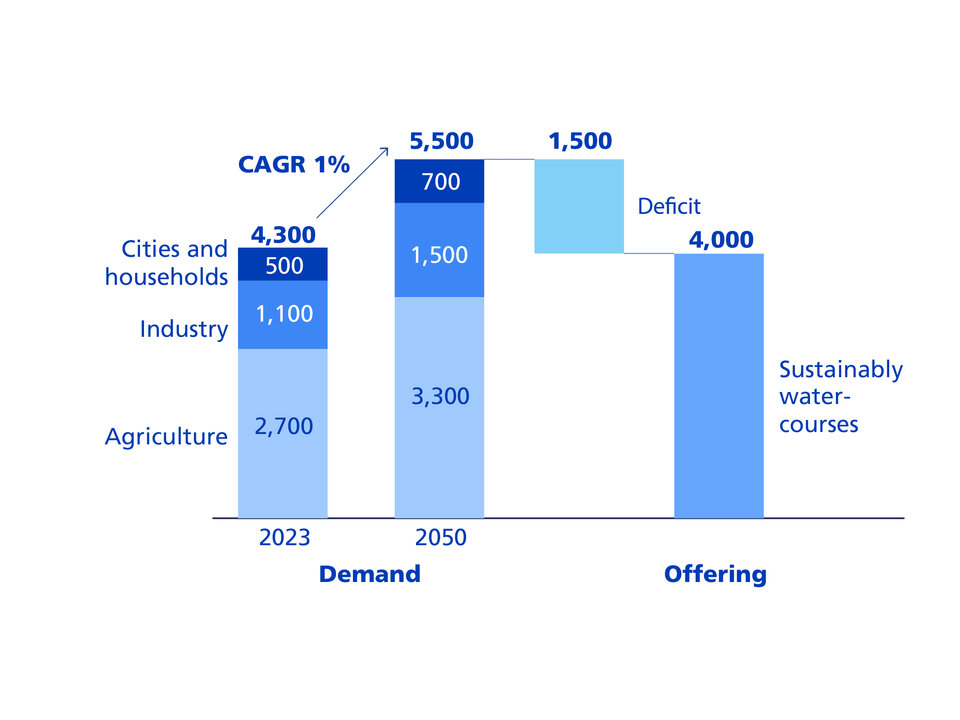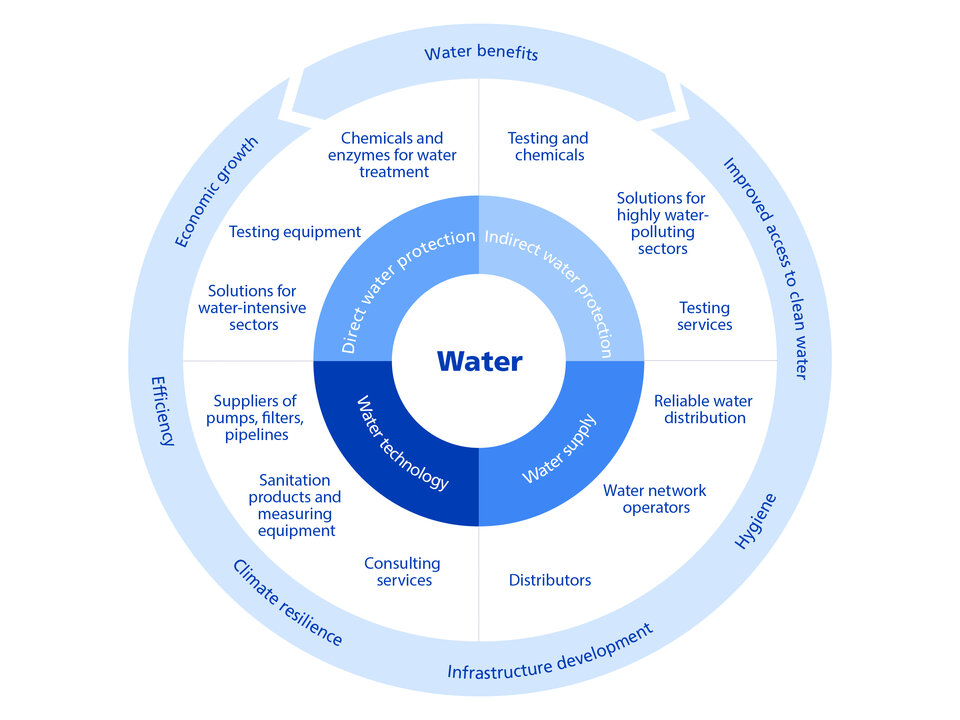Agriculture needs to become more efficient
The combination of global population growth and rising prosperity must go hand in hand with an increase in global food production in order to ensure people are fed. Agriculture has a responsibility to meet this need. However, it is precisely this industry that consumes the most freshwater (groundwater and surface water). It is therefore important to use water as efficiently as possible in the cultivation of food. Possible measures include:
Drip irrigation or pivot irrigation are considered particularly water-efficient:
- Collection and storage of precipitation, such as in artificially created water reservoirs
- Use of covers over fields to minimise evaporation losses
- Innovative fertilisers that increase the water retention capacity of the soil
- Use of novel plant seeds that require less water
Water sector with attractive investment opportunities
Closing the water gap offers a number of attractive investment opportunities in the water sector. This sector is experiencing high annual growth of around 4-6%. This is significantly above the average global economic growth of around 2-3%. In addition, water is not substitutable in most applications. This gives water as an asset class a defensive character. Focus lies on the following three investment themes:





